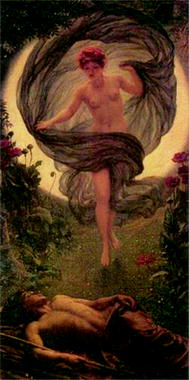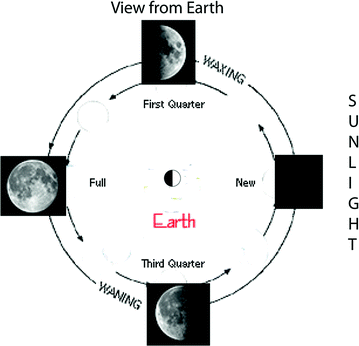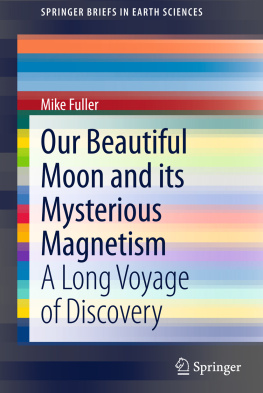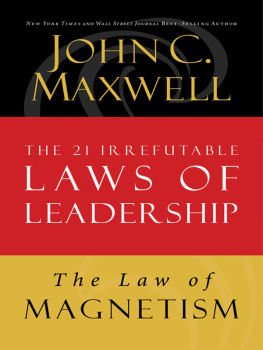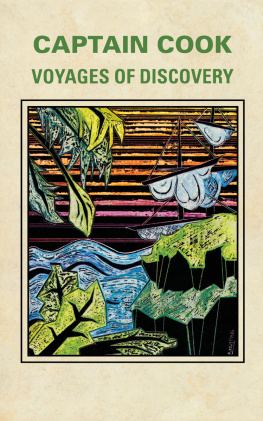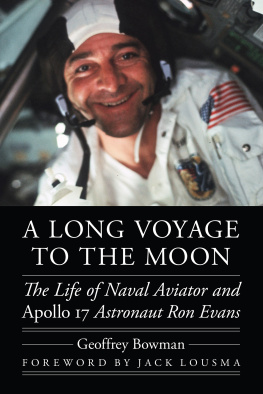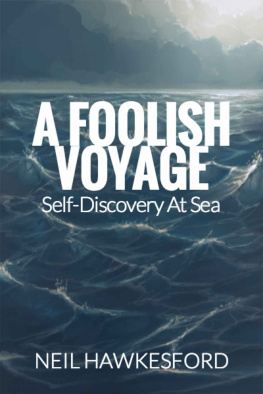To begin our journey to understand the puzzle of lunar magnetism, we first look at the long history of the development of our understanding of the earth moon system to set the stage for Apollo.
1.1 The Moon in the Greek World
Not surprisingly the moon plays a role in the mythology of ancient peoples. From the earliest civilizations in the near east onwards, all seem to have had lunar deities. The Greco-Roman tradition establishes female dominance in Western Civilization lunar mythology. Selene, whose name is remembered in selenography, as studies of the moon are sometimes called, was a Greek goddess of the moon. She was a daughter of the Titans, was in love with Endymion, and asked her father Zeus to grant this beautiful mortal immortality. Zeus acquiesced, and Endymion was visited by Selene in his eternal slumber (Fig. Together, the pair had 50 daughters. Phoebe, another lunar goddess, was of the first generation born of the Titan deities of the Golden age. Her consort was Coeus her brother, who sired Leto and Asteria. The former mated with Zeus and bore Artemis (still another moon goddess) and Apollo. Let us leave this splendidly salacious world of Greek mythology and go to the first naturalist philosophers, who tried to understand the moon in a modern sense.
Fig. 1.1
Selene visits Endymion in his eternal slumber
In turning to the earliest science of the moon in the west, it is natural to stay with the Greeks, but first let us try to imagine ourselves in their world about 2500 years ago. We are in Argos one of the many city states of ancient Greece. We are proud of the famous statues and the art of our city. We have history that goes back hundreds of years to the ancient glories of Homeric heroes. We are standing on the old land of these heroes, which is about as solid and unmovable as anything can be. In the day, we watch the sun rise in the east cross the sky and set in the west, followed at night by the moon, and all the stars of the night sky. We know the moon has phases (Fig. unlike the sun, or any of the other heavenly bodies, as far as we can see. The moon seems to keep time for us with its regular sequence of monthly changes. It follows the same procession across the night sky. Is it not natural to think the whole sky and everything in it rotates about the earth. This was the starting point for the earliest Greek philosopher naturalists, who sought to understand the world.
Fig. 1.2
The phases of the Moona modern version
The first Greek philosopher we meet is Thales of Miletus (~620546 BC), the first of the seven sages of ancient Greece named by Plato. What we know of his work was from others, for no writings of his have come to us. He appears to have been the first to ascribe natural causes to phenomena, rather than accepting them as the whims of the Gods. Recognizing the importance of Egyptian learning in his time, Thales traveled there and brought geometry back to Greece. He knew that the earth was round and that the moon shone by reflected light from the sun. He realized that a solar eclipse took place when the moon passed in front of the face of the sun. He was also the first Greek to predict an eclipse successfully. How he made the prediction is not clear, but he may well have made use of the extensive Near Eastern records. One effect of the eclipse was remarkable; the Medes and Lydians had been fighting indecisively for about 5 years, but with day turning to night during a battle they decided it was time to try diplomacy.
From our viewpoint, his work on the orbits and diameters of the sun and moon is particularly interesting. Given the geocentric system with which Thales worked, the fraction of the suns orbit corresponding to the suns diameter, yielded the ratio of the suns diameter to the length of its orbit around the earth. Here Thales was advocating that the sun was much larger than was generally thought at the time. He estimated the fraction of the solar orbit represented by the diameter of the sun and showed that given any reasonable orbit for the sun and its diameter must be very large. For the moon a similar ratio emerged, so a comparison of the two could be made. It was long way from solving the problem, but it was a start. For the solution to these problems of the size of the moon and its orbit, we will have to wait roughly three centuries.
Thales seems to have been aware of the power of certain iron ores from Magnesia to attract particles of iron
The magnets name the observing Grecians drew
From the magnetic region where it grew ,
as Lucretius wrote. At the very outset of our story, we find interest in magnetism.
An often told story of Thales is that on one occasion, when he was paying more attention to the heavens than to where he was walking, he fell into a ditch. As the story goes, a young Thracian lady suggested to him that he should pay more attention to the earth than to the heavens, but Thales was vindicated in a manner, when his studies of the weather suggested a good forecast in olive futures and he became rich.
Of all the ancient Greek philosopher naturalists, it was Aristotle (384322 BC), whose ideas eventually dominated the scientific history of the west in mediaeval times. He was a student of Plato at the Academy, but more of an empiricist than Plato. For example, he did not accept Platos theory of forms. He thought that properties were intrinsic to an object, rather than abstract universals independent of the objects. From a scientific point of view, his emphasis on observations is central. He was the tutor of Alexander the Great and questions arose concerning how consistent Aristotle was to his written ideas of the polis, in this service to Alexander. He had many enemies in the Athens when he returned. Eventually he fled from Athens to Chalcis to avoid public trial and died there within a year. His texts were preserved and studied in the near east and were known in more detail there, than in Europe. Some of this knowledge in all probability came back to Europe with the Moors in Spain. Certainly, his ideas and in particular his picture of the universe became dominant in the western civilization during the middle ages. For him, it was a geocentric system with moon, planets and sun all orbiting the earth in perfect circles and beyond the fixed stars lay the prime mover. Let us leave to the philosophers, who or what the unmoved prime mover of the system is, and simply accept that in Aristotles model the motion was transferred inwards from the prime mover.
With time, the center of Greek astronomy moved to Alexandria and there, in the 3rd century BC Aristarchus (320250 BC) proposed a heliocentric model of the solar system. It was not well received and had to wait more than a thousand years to be accepted. Its rejection appears to have been based upon two arguments. First, common sense told one that the earth was not moving. Second, if the earth were moving, one should see the parallax in the stars. This is the same effect one sees when traveling in a train or car, whereby nearer objects move with respect to the distant background. If the earth is moving, one should see nearby stars move with respect to the more distant background stars. They do not, so therefore the earth is not moving, QED, as we used to write on proofs in high school geometry. The problem was that it was not until 1838 that telescopes had sufficient resolution to detect this parallax.
